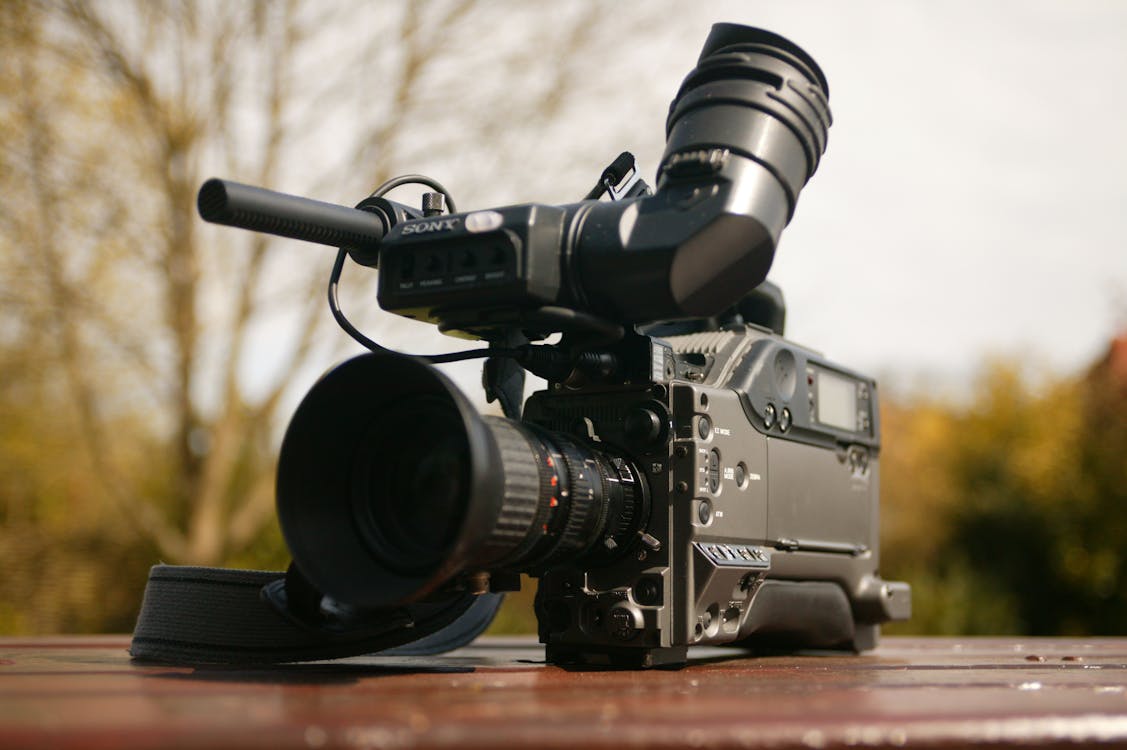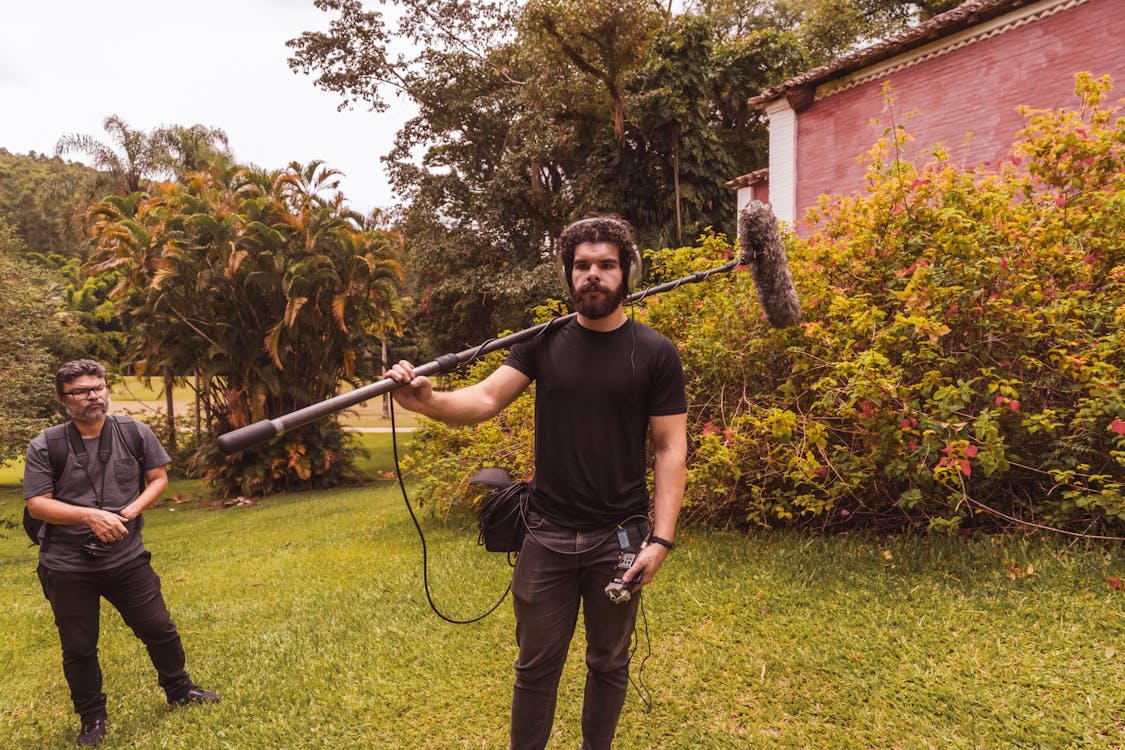Killer Tips to Keep Your Filmmaking Equipment in the Best Shape Possible
Imagine this: you’re on set, ready to shoot a pivotal scene in your indie film, but just as you’re about to roll, your camera malfunctions. Frustration mounts as you scramble to find a solution, and precious production time slips away. Unfortunately, this is a common scenario many filmmakers face due to neglected filmmaking equipment maintenance.
In this blog post, we aim to arm you with important and effective tips for maintaining your filmmaking equipment. Proper maintenance not only saves you money but also ensures your production runs smoothly and your gear lasts longer. By the end of this post, you should hopefully feel more confident in knowing that you can keep your gear reliable, quality, and longer lasting!
Camera and Lens Maintenance

Camera Body Care
Sensor Cleaning
The camera sensor is one of the most critical components of your filmmaking equipment, and keeping it clean is essential for capturing clear, sharp images. Dust and debris on the sensor can create spots and artifacts in your footage.
- Tools Needed: Use a sensor cleaning kit, which typically includes a blower, sensor swabs, and cleaning solution specifically designed for camera sensors.
- Cleaning Process: Begin by using a blower to remove loose dust particles. Next, apply a few drops of the cleaning solution to a sensor swab and gently wipe the sensor in a single, smooth motion. Repeat with a new swab if necessary. Always follow the manufacturer’s instructions to avoid damaging the sensor.
- Frequency: Clean your sensor whenever you notice dust spots in your images or after shooting in dusty environments.
Firmware Updates
Keeping your camera’s firmware up-to-date is an often-overlooked aspect of filmmaking equipment maintenance. Firmware updates can enhance camera performance, fix bugs, and add new features.
- Check for Updates: Regularly visit the manufacturer’s website to check for firmware updates for your camera model.
- Installation: Follow the manufacturer’s instructions to download and install updates. Usually, this involves downloading the firmware file to a memory card, inserting it into the camera, and following on-screen prompts.
- Benefits: Firmware updates can improve autofocus accuracy, enhance image quality, and provide new shooting modes or compatibility with new lenses.
Lens Care
Lens Cleaning Techniques
Lenses are delicate and require careful cleaning to maintain their optical performance. Proper cleaning techniques help prevent scratches and keep your images sharp.
- Tools Needed: Use a microfiber cloth, lens cleaning solution, a blower, and a lens cleaning pen.
- Cleaning Process: Start by using a blower to remove loose dust and debris from the lens surface. Apply a few drops of lens cleaning solution to a microfiber cloth and gently wipe the lens in a circular motion. For stubborn spots, use a lens cleaning pen to carefully remove them.
- Frequency: Clean your lenses regularly, especially after shooting in harsh conditions or when you notice smudges or dust affecting your images.
Lens Calibration
Regular lens calibration ensures that your lenses are focusing accurately, which is crucial for achieving sharp images. Miscalibration can result in soft or out-of-focus footage, even when your subject is perfectly in focus.
- Tools Needed: Use a lens calibration tool or chart, which can be purchased from photography stores or online.
- Calibration Process: Set up the calibration chart according to the manufacturer’s instructions. Mount your camera on a tripod and align it with the chart. Use your camera’s autofocus to focus on the chart and take a series of test shots. Analyze the shots on a computer to check for front or back focus issues and adjust your camera settings accordingly.
- Frequency: Calibrate your lenses whenever you notice focus issues or after significant changes in temperature or altitude, which can affect lens performance.
Audio Equipment Maintenance

Microphone and Recorder Care
Windshield and Pop Filter Cleaning
Windshields and pop filters play a crucial role in the world of filmmaking equipment by maintaining audio quality by reducing wind noise and plosives. Regular cleaning of these components is essential for clear sound recording.
- Cleaning Process: Remove the windshield or pop filter from the microphone. Gently wash the foam windshields with mild soap and warm water, then let them air dry completely before reattaching. For pop filters, wipe down the mesh with a damp cloth and mild soap, then dry thoroughly.
- Frequency: Clean these components after every few uses, especially if they are used outdoors or in dusty environments.
Cable Management
Proper cable management is vital for maintaining the integrity of your audio equipment. Tangled or damaged cables can lead to signal loss and audio quality issues.
- Proper Winding: Always wind cables in a figure-eight pattern or use the over-under technique to prevent tangling and reduce stress on the cables. This method helps maintain the flexibility and longevity of the cables.
- Storage: Store cables in a dedicated bag or case to keep them organized and protected. Use cable ties or Velcro straps to keep them neatly bundled.
- Inspection: Regularly inspect cables for signs of wear and tear, such as fraying or exposed wires. Replace any damaged cables immediately to avoid potential audio issues.
Battery Maintenance
Battery Health
Batteries are essential for powering your audio equipment, and maintaining their health is crucial for consistent performance.
- Charging Practices: Always use the charger recommended by the manufacturer. Avoid overcharging by unplugging the charger once the battery is fully charged. If your equipment uses rechargeable batteries, allow them to fully discharge before recharging to maintain their capacity.
- Storage: Store batteries in a cool, dry place. Avoid exposing them to extreme temperatures, which can shorten their lifespan. If you won’t be using your batteries for an extended period, store them at around 50% charge to prevent degradation.
- Rotation: If you have multiple batteries, rotate their use to ensure even wear. This practice helps maintain the overall health and longevity of your battery collection.
Backup Batteries
Having backup batteries is crucial for any filmmaking project, ensuring that you can continue working without interruptions due to power loss.
- Quantity: Keep at least one or two fully charged backup batteries for each piece of battery-powered audio equipment. This practice helps avoid downtime during shoots.
- Rotation: Rotate your backup batteries regularly with your primary ones to ensure they are always in good condition and ready to use.
- Storage: Store backup batteries in a safe, dry place where they are easily accessible during shoots. Consider labeling them with the date they were last charged to keep track of their readiness.
Lighting Equipment Maintenance

Light Fixture Care
Dust and Debris Removal
Maintaining your lighting equipment is essential for consistent performance and longevity. Dust and debris can accumulate on light fixtures, affecting their brightness and color temperature.
- Cleaning Process: Start by unplugging the light and letting it cool down completely. Use a soft, dry cloth to wipe down the exterior of the fixture. For more stubborn dust, use a can of compressed air to blow it away. Avoid using harsh chemicals or abrasive materials that could damage the surface.
- Frequency: Clean your light fixtures after every few shoots or whenever you notice a decrease in brightness. Regular cleaning helps maintain optimal light output and color accuracy.
Bulb Replacement
Replacing bulbs regularly is crucial for maintaining the quality and consistency of your lighting setup. Over time, bulbs can dim or change color, affecting the overall look of your film.
- Signs of Wear: Look for signs such as flickering, dimming, or color shifts, which indicate that a bulb needs replacing.
- Replacement Process: Turn off and unplug the light fixture, then let it cool completely before handling the bulb. Use a cloth or gloves to avoid getting oils from your fingers on the new bulb, which can shorten its lifespan. Follow the manufacturer’s instructions for installing the new bulb.
- Frequency: Replace bulbs as needed based on their performance and the manufacturer’s recommendations. Keeping a few spare bulbs on hand ensures you’re prepared for any sudden failures during a shoot.
Softbox and Diffuser Maintenance
Fabric Cleaning
Softboxes and diffusers help create soft, even lighting, but their fabric surfaces can accumulate dust and dirt over time.
- Cleaning Process: Gently wipe down the fabric with a damp cloth and mild soap. Avoid using too much water, which can damage the material. For stubborn stains, use a gentle fabric cleaner. Make sure the fabric is completely dry before using it again.
- Frequency: Clean your softboxes and diffusers every few months or whenever they appear dirty. Regular cleaning helps maintain their effectiveness in diffusing light.
Frame Integrity
The frames of your softboxes and diffusers need to be in good condition to ensure proper functionality and safety.
- Inspection: Regularly check the frames for any signs of wear and tear, such as bends, breaks, or loose connections. Ensure that all components are securely attached and functioning correctly.
- Maintenance: Tighten any loose screws or bolts and replace any damaged parts as needed. Keeping the frames in good condition ensures that your softboxes and diffusers maintain their shape and performance.
- Storage: Store softboxes and diffusers in their original cases or bags to protect them from damage when not in use. Proper storage helps prolong their lifespan and keeps them ready for your next shoot.
In Conclusion
Maintaining your filmmaking equipment is essential for ensuring smooth production processes and high-quality results. Imagine the peace of mind that comes with knowing your equipment is always in top shape, ready to deliver its best performance whenever you need it. This assurance allows you to focus more on your creative process and less on troubleshooting technical issues.
Your filmmaking equipment is a significant investment in your career and passion. By dedicating time and care to its maintenance, you ensure that it continues to support your creative endeavors for years to come. Whether you’re an indie filmmaker just starting out or a seasoned professional, these maintenance tips are designed to help you get the most out of your gear.
And finally, if you’re an indie filmmaker who is working on a short film but needs a bit of extra help to get your project in motion, you’ll want to give our short film funding contest a look. Through our contest, you could earn up to $10,000 in funding for the production of your short film! And the best part is that you don’t need to send us a full script to enter. Instead, send us one sentence that explains the premise of your film and why you need our help. Head to our entry page to learn more and sign up!